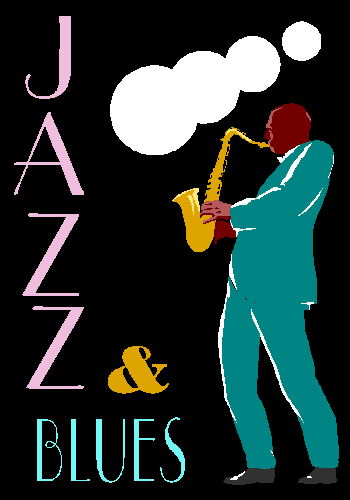

The rural-based blues music of the
Yazoo and Texas deltas spoke more of coping with misery and the "low-down and
dirty" side of living as penniless sharecroppers and field hands in the Jim
Crow South. The message presented by blues singers in hundreds of southern
"juke joints" was one of desperation, anguish, and perseverance. They
sang of a pervasive sadness that was always present. At the same time,
the blues also celebrated the human joys of black community, including love
and heroic actions in the midst of hard times.
 A
Cultural Legacy: Louis Armstrong
A
Cultural Legacy: Louis Armstrong
Armstrong was born in one of the poorest sections of New Orleans on Aug. 4, 1901. "He was a prodigy," says art historian and curator Marc Miller, "a hard-working kid who helped support his mother and sister by working every type of job there was, including going out on street corners at night to sing for coins." At age 7, he bought his first real horn--a cornet. When Armstrong was 11 years old, juvenile court sent him to the Jones Home for Colored Waifs for firing a pistol on New Year's Eve. While there, he had his first formal music lessons and played in the home's brass band. After about 18 months he was released. From then on, he largely supported himself as a musician, playing with pick-up bands and in small clubs with his mentor Joe "King" Oliver. Oliver was one of a handful of noted musicians in New Orleans--along with Jelly Roll Morton, Sidney Bechet and others--who were creating a distinctive and widely popular new band music out of blues and ragtime. Soon, sheet music publishers and record companies would make jazz a household name.
Although he was no stranger to racial prejudice himself, Armstrong rarely made
public statements. In 1957, however, he publicly condemned the violence that
swept Little Rock over school integration and how it was handled. "Do you dig
me when I say, 'I have a right to blow my top over injustice?'" he said. For
this statement, Armstrong was called a firebrand in newspapers across the country.
By the '50s, Armstrong was an established international celebrity--an icon to
musicians and lovers of jazz.
|
|
|
|
|
|
|
|
|
|
|
|
|
|
|
|